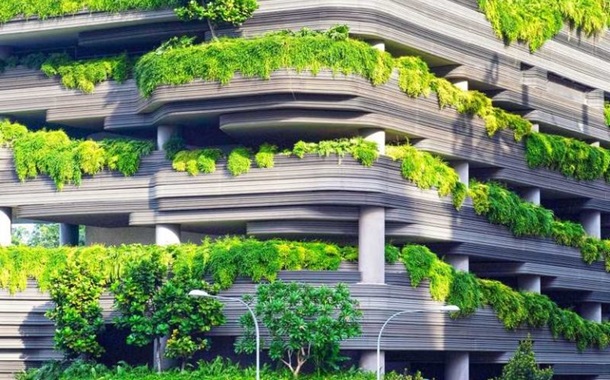The Influence Factors of Economic Development of Tourism Industry
Downloads
Doi:10.28991/HIJ-2024-05-01-03
Full Text:PDF
Downloads
Ullah, N., Zada, S., Siddique, M. A., Hu, Y., Han, H., Vega-Muñoz, A., & Salazar-Sepúlveda, G. (2021). Driving factors of the health and wellness tourism industry: A sharing economy perspective evidence from KPK Pakistan. Sustainability (Switzerland), 13(23), 1–16. doi:10.3390/su132313344.
Xie, X., Sun, H., Gao, J., Chen, F., & Zhou, C. (2021). Spatiotemporal differentiation of coupling and coordination relationship of tourism–urbanization–ecological environment system in china's major tourist cities. Sustainability (Switzerland), 13(11), 1–17. doi:10.3390/su13115867.
Zhang, L., & Zhao, Y. (2023). Research on the Coupling Coordination of Green Finance, Digital Economy, and Ecological Environment in China. Sustainability (Switzerland), 15(9), 2784–2790. doi:10.3390/su15097551.
Zhang, W., Liu, Z., Zhang, Y., Yaluk, E., & Li, L. (2021). The impact of air quality on inbound tourist arrivals over china based on grey relational analysis. Sustainability (Switzerland), 13(19), 1–19. doi:10.3390/su131910972.
Wu, W., & Zhan, H. (2017). Research on fiscal expenditure and tourism development of Huangshan city: Based on grey relational analysis. MATEC Web of Conferences, 100, 1–8. doi:10.1051/matecconf/201710005037.
Gan, C., Voda, M., Wang, K., Chen, L., & Ye, J. (2021). Spatial network structure of the tourism economy in urban agglomeration: A social network analysis. Journal of Hospitality and Tourism Management, 47, 124–133. doi:10.1016/j.jhtm.2021.03.009.
Zhou, G. (2022). Regional Ecological Environment Assessment and Its Correlation with Economic Activities. Journal of Environmental Protection and Ecology, 23(6), 2713–2723.
Zhao, X., & Yu, G. (2021). Data-Driven Spatial Econometric Analysis Model for Regional Tourism Development. Mathematical Problems in Engineering, 2021, 1–7. doi:10.1155/2021/6631833.
Gong, Y., Yang, X. Q., Ran, C. Y., Shi, V., & Zhou, Y. F. (2021). Evaluation of the sustainable coupling coordination of the logistics industry and the manufacturing industry in the Yangtze River economic belt. Sustainability (Switzerland), 13(9), 1–19. doi:10.3390/su13095167.
Tang, Z. (2015). An integrated approach to evaluating the coupling coordination between tourism and the environment. Tourism Management, 46, 11–19. doi:10.1016/j.tourman.2014.06.001.
Sun, Y., & Cui, Y. (2018). Analyzing the Coupling Coordination among Economic, Social, and Environmental Benefits of Urban Infrastructure: Case Study of Four Chinese Autonomous Municipalities. Mathematical Problems in Engineering, 2018, 1–13. doi:10.1155/2018/8280328.
Jing, S., & Amy, L. R. (2022). Innovation Ability of Strategic Emerging Industrial Cluster Based on 2-Mode Network and Three-Dimensional Grey Correlation Model. Journal of Grey System, 34(2), 108-121.
Sun, Y., Cui, Y., & Huang, H. (2016). An Empirical Analysis of the Coupling Coordination among Decomposed Effects of Urban Infrastructure Environment Benefit: Case Study of Four Chinese Autonomous Municipalities. Mathematical Problems in Engineering, 2016, 1–11. doi:10.1155/2016/8472703.
Xin, X. (2022). Construction of Ecological Compensation System for Water Environment Resource in Public Places Using Grey Correlation. Mathematical Problems in Engineering, 2022, 1 1–1 11. doi:10.1155/2022/3026588.
Kim, N., Park, J., & Choi, J. J. (2017). Perceptual differences in core competencies between tourism industry practitioners and students using Analytic Hierarchy Process (AHP). Journal of Hospitality, Leisure, Sport and Tourism Education, 20, 76–86. doi:10.1016/j.jhlste.2017.04.003.
Mu, X., Kong, L., Tu, C., Chen, J., & Hu, G. (2022). Correlation and synergy analysis of urban economy–energy–environment system”A case study of Beijing. Natural Resource Modeling, 35(1), 1–25. doi:10.1111/nrm.12329.
Zhao, J., & Wang, Y. (2016). The Sustainable Development Research of Wild Plant Tourism Resources Based on the Entropy-AHP Evaluation Method. Advance Journal of Food Science and Technology, 10(2), 81–89. doi:10.19026/ajfst.10.1803.
Guo, X., & Sun, Z. (2016). A Novel Evaluation Approach for Tourist Choice of Destination Based on Grey Relation Analysis. Scientific Programming, 2016, 1–10. doi:10.1155/2016/1812094.
Ji, X., & Jiang, Y. (2018). The Difference of Outward-Oriented Economy in Six Provinces of Central China Based on the Theil Index. Asian Development Policy Review, 6(2), 70–76. doi:10.18488/journal.107.2018.62.70.76.
Mullakkezhil Reghunathan, V., Joseph, S., Warrier, C. U., Hameed, A. S., & Albert Moses, S. (2016). Factors affecting the environmental carrying capacity of a freshwater tropical lake system. Environmental Monitoring and Assessment, 188(11), 1–23. doi:10.1007/s10661-016-5636-1.
Jia, Y. (2021). Regional differences and the contributory factors based on tourism economy in river delta of Yangtze of China using fuzzy analytic hierarchy process. Journal of Intelligent and Fuzzy Systems, 40(4), 8307–8315. doi:10.3233/JIFS-189653.
Hu, Y. C. (2023). Nonadditive tourism forecast combination using grey relational analysis. Grey Systems, 13(2), 277–296. doi:10.1108/GS-07-2022-0079.
- This work (including HTML and PDF Files) is licensed under a Creative Commons Attribution 4.0 International License.






















